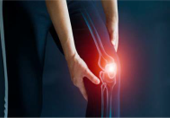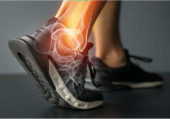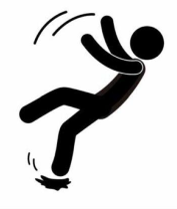Physical Therapy Rehab Treatment Problem:
-
 Physical therapy for injury rehab lacks equipment that has instability in all 3 planes of motion and lacks progressive levels to continually challenge treatment of an injury for continuous improvement.[i]
Physical therapy for injury rehab lacks equipment that has instability in all 3 planes of motion and lacks progressive levels to continually challenge treatment of an injury for continuous improvement.[i] -
Without 3 planes of motion and increasing challenge, PT rehab equipment is inefficient in stabilizing and strengthening the entire musculoskeletal system, especially muscles, ligaments, and tendons surrounding joints most prone to overuse and injury (ankles, knees, hips, shoulders, elbows, wrists).[ii] [iii]

-
No cost-efficient and universal system exists that rehabilitates while stabilizing and strengthening the entire musculoskeletal system, such that it can cost be effectively incorporated into any Physical Therapy clinic and be rented or acquired by patients for home use.
Physical Therapy Dynamic Balance-Strength™ Treatment Solution:
-
 ZeSa’s Dynamic Balance-Strength Training System™ is a cost-efficient and universal system that rehabilitates while stabilizing and strengthening the entire musculoskeletal system.
ZeSa’s Dynamic Balance-Strength Training System™ is a cost-efficient and universal system that rehabilitates while stabilizing and strengthening the entire musculoskeletal system. -
It is the only non-invasive rehabilitation system that is progressive, providing accelerated results following initial injury and throughout the recovery process by increasing challenge levels for improved long-term results.[iv] [v]
-
ZeSa’s system is user-friendly and can easily be incorporated into current rehab protocols for a full range of individuals and musculoskeletal injuries.
-
Studies show that when all muscles are trained and activated, injuries are reduced, and injury recovery is accelerated.[vi]
-
Injured and surgically restored joints are unstable and weak, and strong dynamic Balance-Strength™ training is needed for all muscle levels for fast recovery, reduced down-time, and saved $$.[vii] [viii] [ix]
-
Training with ZeSa’s System recruits all muscle layers, including stabilizing muscles that support the primary muscles and provide dynamic joint stabilization.
-
 Stabilizing muscles maintain proper posture and joint alignment during movement. While primary muscles are important, stabilizing muscles are critical for overall strength, balance & injury prevention and rehab.[x] [xi] [xii]
Stabilizing muscles maintain proper posture and joint alignment during movement. While primary muscles are important, stabilizing muscles are critical for overall strength, balance & injury prevention and rehab.[x] [xi] [xii] -
By incorporating the critical rotational plane of movement into training, ZeSa’s system mimics how the human body naturally moves — particularly in high-intensity settings on the court or field. Training in three planes of movement maximizes muscle recruitment and enhances core musculature.[xiii] [xiv]
-
Combined instability, 360° rotation, and progressive levels amplify the challenge and effect of each movement, which is important in boosting patient progress in their rehabilitation program.
-
Training with ZeSa’s system elicits a reactive response to create a true mind/body connection, which correlates to improvements in every day functional movements and contributes to growth of new brain cells and neural executive functions (i.e., planning, problem solving, behavior control).[xv] [xvi] [xvii]
-
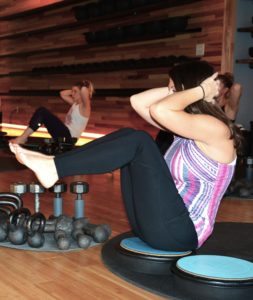 ZeSa’s system maximizes spine muscle recruitment and stabilization by increasing core muscle (lumbar & abdominal) activation via the need to stabilize the spine and maintain balance control.[xviii]
ZeSa’s system maximizes spine muscle recruitment and stabilization by increasing core muscle (lumbar & abdominal) activation via the need to stabilize the spine and maintain balance control.[xviii] -
Studies show dynamic balance training creates 27% – 54% muscle activation increase, including the trunk musculature. Strong core muscles are important for the prevention of low back pain.[xix] [xx] [xxi]
-
Strong core musculature stabilizes both the spine and pelvis, plays a crucial role in balance and performance, and is the bridge between the upper and lower body allowing for efficient transfer of force and energy during movement.[xxii]
-
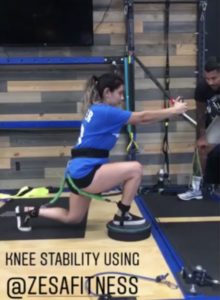 All basic workout tools (weights, suspension trainers, resistance bands, medicine balls, etc.) incorporate seamlessly into ZeSa® workouts.
All basic workout tools (weights, suspension trainers, resistance bands, medicine balls, etc.) incorporate seamlessly into ZeSa® workouts. -
Any physical therapy that can be done on a flat surface can be done (when appropriate) with the Dynamic Balance-Strength Training System™ for increased challenge and intensity.
-
Recent studies show balance is a stronger indicator of overall health and life expectancy across ALL ages than is aerobic fitness, flexibility and muscle strength.[xxiii] [xxiv]
-
The instability, rotation, and progressive levels of the ZeSa system provide health and wellness benefits at any age.
-
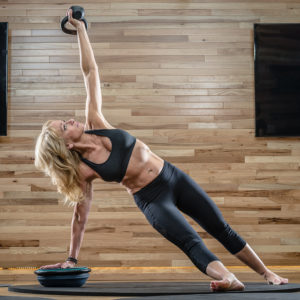 The best way to improve your balance is to challenge it [xxv] [xxvi], and ZeSa® Dynamic Balance-Strength Training™ does just that.
The best way to improve your balance is to challenge it [xxv] [xxvi], and ZeSa® Dynamic Balance-Strength Training™ does just that.
[i] Vincent HK, Brownstein M, Vincent KR. Injury Prevention, Safe Training Techniques, Rehabilitation, and Return to Sport in Trail Runners. Arthrosc Sports Med Rehabil. 2022 Jan 28;4(1):e151-e162. doi: 10.1016/j.asmr.2021.09.032. PMID: 35141547; PMCID: PMC8811510.
[ii] HuxelBlivenKC, Anderson BE. Core stability training for injury prevention. Sports Health. 2013 Nov;5(6):514-22. doi: 10.1177/1941738113481200. PMID: 24427426; PMCID: PMC3806175
[iii] Greising SM, Corona BT, Call JA. Musculoskeletal Regeneration, Rehabilitation, and Plasticity Following Traumatic Injury. Int J Sports Med. 2020 Jul;41(8):495-504. doi: 10.1055/a-1128-7128. Epub 2020 Apr 2. PMID: 32242332.
[iv] You DZ, Leighton JL, Schneider PS. Current Concepts in Rehabilitation Protocols to Optimize Patient Function Following Musculoskeletal Trauma. Injury. 2020 May;51 Suppl 2:S5-S9. doi: 10.1016/j.injury.2020.03.047. Epub 2020 May 11. PMID: 32418645.
[v] Behm D, Colado JC. The effectiveness of resistance training using unstable surfaces and devices for rehabilitation. Int J Sports Phys Ther. 2012 Apr;7(2):226-41. PMID: 22530196; PMCID: PMC3325639.
[vi] Hübscher M, Zech A, Pfeifer K, Hänsel F, Vogt L, Banzer W. Neuromuscular training for sports injury prevention: a systematic review. Med Sci Sports Exerc. 2010 Mar;42(3):413-21. doi: 10.1249/MSS.0b013e3181b88d37. PMID: 19952811.
[vii] https://clinicaltrials.gov/ct2/show/NCT04599985
[viii] Mollà-Casanova S, Inglés M, Serra-Añó P. Effects of balance training on functionality, ankle instability, and dynamic balance outcomes in people with chronic ankle instability: Systematic review and meta-analysis. Clin Rehabil. 2021 Dec;35(12):1694-1709. doi: 10.1177/02692155211022009. Epub 2021 May 31. PMID: 34058832.
[ix] Nam SM, Kim WB, Yun CK. Effects of balance training by knee joint motions on muscle activity in adult men with functional ankle instability. J Phys Ther Sci. 2016 May;28(5):1629-32. doi: 10.1589/jpts.28.. Epub 2016 May 31. PMID: 27313386; PMCID: PMC4905925.
[x] Wikstrom EA, Tillman MD, Chmielewski TL, Borsa PA. Measurement and evaluation of dynamic joint stability of the knee and ankle after injury. Sports Med. 2006;36(5):393-410. doi: 10.2165/00007256-200636050-00003. PMID: 16646628.
[xi] Su Y, Li W, Pan C, Shi Y. Effects of combination of strength and balance training on postural control and functionality in people with chronic ankle instability: a systematic review and meta analysis. BMC Sports Sci Med Rehabil. 2024 Apr 9;16(1):79. doi: 10.1186/s13102-024-00845-1. PMID: 38594775; PMCID: PMC11005148.
[xii] O’Driscoll, J., Kerin, F. & Delahunt, E. Effect of a 6-week dynamic neuromuscular training programme on ankle joint function: A Case report. BMC Sports Sci Med Rehabil 3, 13 (2011). https://doi.org/10.1186/1758-2555-3-1
[xiii] Stanković M, Čaprić I, Katanić B, Špirtović O, Maljanović D, Nailović H, Muković I, Jelaska I, Trajković N. Proprioceptive training methods (PTM) in female soccer players – a systematic review. BMC Sports Sci Med Rehabil. 2024 Apr 30;16(1):101. doi: 10.1186/s13102-024-00892-8. PMID: 38689340; PMCID: PMC11061981.
[xiv] https://www.nsca.com/education/articles/kinetic-select/effects-of-core-instability-on-muscle-activity/
[xv] Kim Y, Vakula MN, Bolton DAE, Dakin CJ, Thompson BJ, Slocum TA, Teramoto M, Bressel E. Which Exercise Interventions Can Most Effectively Improve Reactive Balance in Older Adults? A Systematic Review and Network Meta-Analysis. Front Aging Neurosci. 2022 Jan 18;13:764826. doi: 10.3389/fnagi.2021.764826. PMID: 35115917; PMCID: PMC8804322.
[xvi] Rogge AK, RöderB, Zech A, HöttingK. Exercise-induced neuroplasticity: Balance training increases cortical thickness in visual and vestibular cortical regions. Neuroimage. 2018 Oct 1;179:471-479. doi: 10.1016/.neuroimage.2018.06.065. Epub2018 Jun 26. PMID: 29959048.
[xvii] Rogge AK, RöderB, Zech A, HöttingK. Exercise-induced neuroplasticity: Balance training increases cortical thickness in visual and vestibular cortical regions. Neuroimage. 2018 Oct 1;179:471-479. doi: 10.1016/.neuroimage.2018.06.065. Epub2018 Jun 26. PMID: 29959048.
[xviii] Hlaing SS, Puntumetakul R, Khine EE, Boucaut R. Effects of core stabilization exercise and strengthening exercise on proprioception, balance, muscle thickness and pain related outcomes in patients with subacute nonspecific low back pain: a randomized controlled trial. BMC Musculoskelet Disord. 2021 Nov 30;22(1):998. doi: 10.1186/s12891-021-04858-6. PMID: 34847915; PMCID: PMC8630919.
[xix] Batista GA, Beltrán SP, Passos MHPD, Calixtre LB, Santos LRH, de Araújo RC. Comparison of the Electromyography Activity during Exercises with Stable and Unstable Surfaces: A Systematic Review and Meta-Analysis. Sports (Basel). 2024 Apr 18;12(4):111. doi: 10.3390/sports12040111. PMID: 38668579; PMCID: PMC11055131.
[xx] Aguilera-Castells J, Buscà B, Morales J, Solana-Tramunt M, Fort-Vanmeerhaeghe A, Rey-Abella F, Bantulà J, Peña J. Muscle activity of Bulgarian squat. Effects of additional vibration, suspension and unstable surface. PLoS One. 2019 Aug 26;14(8):e0221710. doi: 10.1371/journal.pone.0221710. PMID: 31449568; PMCID: PMC6709890.
[xxi] Huxel Bliven KC, Anderson BE. Core stability training for injury prevention. Sports Health. 2013 Nov;5(6):514-22. doi: 10.1177/1941738113481200. PMID: 24427426; PMCID: PMC3806175.
[xxii] Zemková E. Strength and Power-Related Measures in Assessing Core Muscle Performance in Sport and Rehabilitation. Front Physiol. 2022 May 2;13:861582. doi: 10.3389/fphys.2022.861582. PMID: 35586718; PMCID: PMC9108269.
[xxiii] https://www.cnn.com/2022/06/21/health/balance-on-one-leg-longevity-wellness/index.html
[xxiv] https://www.wellandgood.com/balance-and-longevity/
[xxv] Augustine Joshua Devasahayam, Kyle Farwell, Bohyung Lim, Abigail Morton, Natalie Fleming, David Jagroop, Raabeae Aryan, Tyler Mitchell Saumur, Avril Mansfield, The Effect of Reactive Balance Training on Falls in Daily Life: An Updated Systematic Review and Meta-Analysis, Physical Therapy, Volume 103, Issue 1, January 2023, pzac154, https://doi.org/10.1093/ptj/pzac154
[xxvi] Gebel A, Lesinski M, Behm DG, Granacher U. Effects and Dose-Response Relationship of Balance Training on Balance Performance in Youth: A Systematic Review and Meta-Analysis. Sports Med. 2018 Sep;48(9):2067-2089. doi: 10.1007/s40279-018-0926-0. PMID: 29736728.


